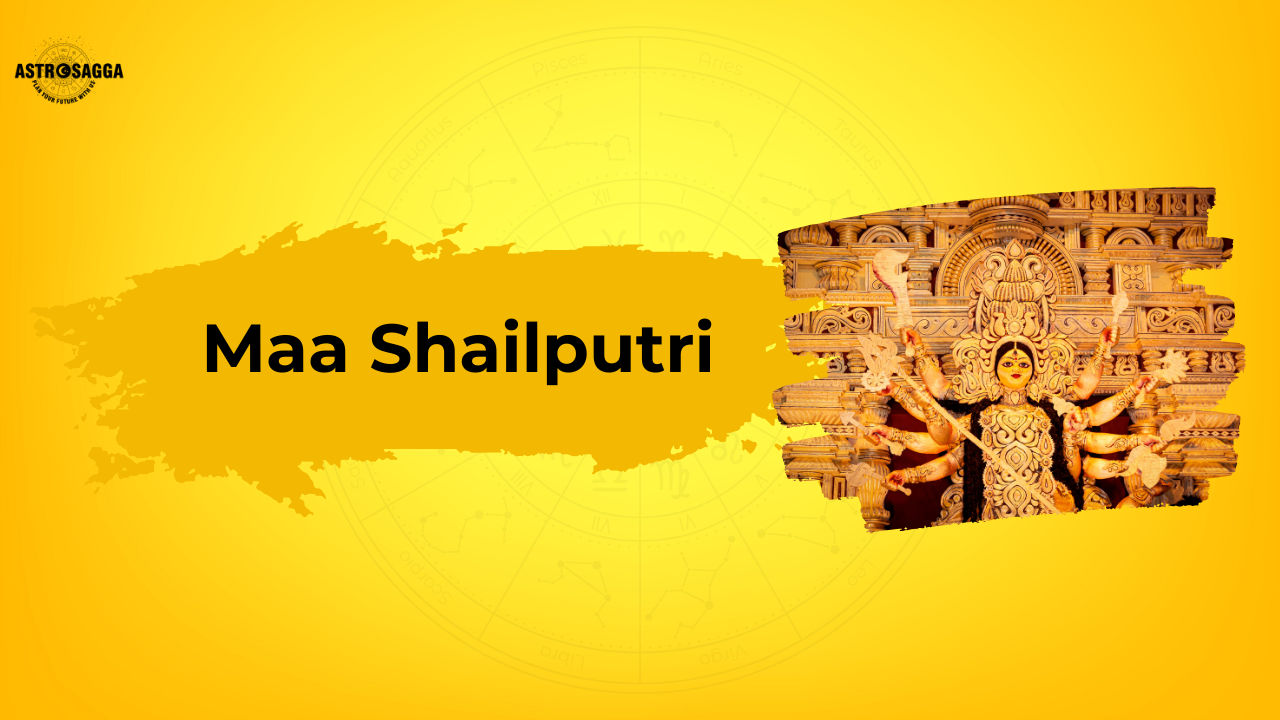Navratri, the grand Hindu festival dedicated to the worship of Goddess Durga and her nine forms, commences on the Pratham (first) day of Navratri. This year, the festival starts on October 3, 2024, marking the beginning of the nine days of spiritual reverence and celebration. The first day, dedicated to Maa Shailputri, sets the spiritual tone for the entire Navratri.
Who is Maa Shailputri?
Maa Shailputri, also known as the 'Daughter of the Mountains,' is the first form of Goddess Durga worshipped during Navratri. Her name is derived from the Sanskrit words 'Shail' meaning mountain and 'Putri' meaning daughter. She is considered the embodiment of Mother Nature and represents strength, purity, and innocence. According to Hindu Scriptures, Maa Shailputri is the reincarnation of Sati, the consort of Lord Shiva. After her self-immolation, Sati was reborn as Shailputri, the daughter of the King of Mountains, Himavat (Himalaya).
In this form, Maa Shailputri holds a trident (Trishul) in her right hand and a lotus in her left, while riding a Nandi (bull). This divine depiction symbolizes her connection to nature and the fundamental strength she embodies. Worshipping her on the first day of Navratri is believed to bestow devotees with strength, determination, and the spiritual drive needed for the rest of the festival.
Significance of the First Day of Navratri
The first day of Navratri is crucial as it marks the beginning of the nine-day-long festival, representing a spiritual journey that involves self-purification, reflection, and devotion. Maa Shailputri is regarded as the provider of fortune and spiritual enlightenment. Her worship on this day is aimed at purifying the mind and soul, helping devotees to connect deeply with their inner selves and the universal energy.
In Hindu tradition, the first day of Navratri is also considered the start of a new chapter, as it symbolizes the victory of good over evil. Maa Shailputri’s divine power serves as a reminder of strength, courage, and resilience, inspiring devotees to walk on the path of righteousness and truth throughout the festival.
Read Also - Seva: Selfless Service in Spiritual Growth
Rituals and Puja Vidhi of the First Day
The rituals for worshipping Maa Shailputri on the first day of Navratri are carried out with great devotion and spiritual discipline. Here’s a step-by-step guide to performing the puja:
Kalash Sthapana (Ghatasthapana):
The day begins with Kalash Sthapana, which marks the official start of Navratri. A sacred Kalash (pot) filled with water, betel leaves, and a coconut on top is placed at the puja altar. This Kalash symbolizes the universe and invites the divine presence of Goddess Durga into the household.
Cleaning and Decoration:
The puja area is cleaned thoroughly, and the surroundings are adorned with flowers, mango leaves, and rangoli designs. Fresh flowers and garlands are used to decorate the idol or picture of Maa Shailputri.
Maa Shailputri Puja:
After Kalash Sthapana, the idol or image of Maa Shailputri is placed on a raised platform. Devotees offer kumkum, turmeric, rice grains, flowers, and fruits to the goddess. The worship begins with the chanting of mantras, including the Shailputri mantra:
"ॐ देवी शैलपुत्र्यै नमः" (Om Devi Shailputryai Namah)
Offering Prasad:
On this day, white-colored sweets or dishes, such as kheer (rice pudding), are prepared as prasad, as white is considered the color associated with Maa Shailputri. Devotees offer the prasad to the goddess, seeking her blessings for prosperity and peace.
Navratri Fasting:
Many devotees observe a fast on the first day of Navratri. The fasting rules may vary, but typically, consumption of grains, lentils, and non-vegetarian food is avoided. Fruits, milk, and certain permitted foods are consumed.
Arti and Bhajans:
The puja concludes with an aarti (a ritual of waving a lamp) in front of Maa Shailputri. Devotees sing bhajans and chant the divine name of the goddess, invoking her blessings for strength and protection.
Maa Shailputri's Favorite Color and Its Significance
Maa Shailputri’s favorite color is white, symbolizing purity, peace, and innocence. Devotees often wear white attire on the first day of Navratri to honor her. This color also signifies the beginning of the spiritual journey that Navratri represents, encouraging the devotees to purify their minds and hearts to attain divine blessings.
Benefits of Worshipping Maa Shailputri
Worshipping Maa Shailputri on the first day of Navratri is believed to bestow several spiritual and worldly benefits. Some of these benefits include:
Inner Strength: Maa Shailputri empowers her devotees with inner strength and determination. Her worship instills confidence and resilience to overcome challenges and adversities in life.
Emotional Stability: As the goddess of nature and mountains, she symbolizes stability. Her blessings help in maintaining emotional balance and staying grounded.
Spiritual Growth: Maa Shailputri’s worship purifies the mind and soul, aiding devotees in their spiritual journey. It marks the beginning of self-reflection and self-improvement, setting the foundation for spiritual growth.
Health and Prosperity: Maa Shailputri, being the daughter of the mountains, is associated with natural health and well-being. Worshipping her is believed to bring good health, peace, and prosperity to the household.
Celebration of the First Day of Navratri Across India
The first day of Navratri is celebrated with immense devotion and grandeur across India. Temples dedicated to Goddess Durga witness large gatherings of devotees who offer prayers, chant mantras, and participate in religious ceremonies. Homes are adorned with colorful decorations, and the air is filled with the fragrance of incense and flowers.
In various regions of India, different customs and traditions are followed to honor Maa Shailputri. In some parts, young girls (Kanya Puja) are worshipped as the embodiment of the goddess, symbolizing purity and divinity. In others, folk dances like Garba and Dandiya Raas are performed to celebrate the joy and vigor of the festival.
Conclusion
The worship of Maa Shailputri on the first day of Navratri signifies the start of a profound spiritual journey. Her divine energy represents purity, strength, and resilience, setting the tone for the nine-day celebration. As devotees come together to honor her, they embark on a path of self-purification, reflection, and inner strength.
This Navratri, let us embrace the grace and blessings of Maa Shailputri, invoking her divine power to guide us through the challenges of life with strength and serenity. May this Navratri bring peace, prosperity, and spiritual enlightenment to all.
If you are willing to know about your life's precise predictions, download the best astrology app AstroSagga now!












